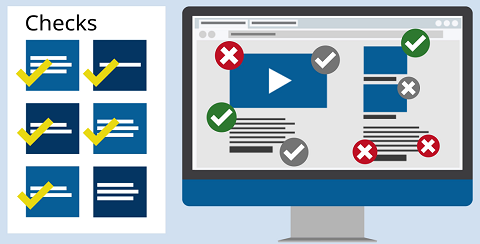
Free Online Course page
By Jennifer Bland
According to the CDC, 1 in 4 adults in the United States lives with a disability. In South Carolina, the percentage is even higher with 1 in 3 adults reporting having a disability. However, the most recent report from the NCES found that only 1 in 5 undergraduate students reported a disability. Given the gap between the data, there are likely students in both your face-to-face and online courses with disabilities they did not disclose to you. Without that disclosure, the institution has no way of knowing what services they would benefit from and cannot alert you of their needs.
Why would a student not share this information? According to Wendy Woodsby, director of Disability Services at USC Upstate, the main reason students don’t report disabilities on campus is that they were not aware that the services were available, but they may also fear the possible stigma of requiring accommodations. Or they may not be aware that what they are experiencing (e.g. chronic medical conditions or chronic mental health needs) qualifies as a disability.
Given that students with unreported disabilities are still in your classroom, how are you going to provide all students in your courses an equitable educational experience so they can all learn in the way that is best for them? The answer is Universal Design Learning (UDL).
UDL is the process of making intentional decisions before you teach your course, so all students have an equal opportunity to learn regardless of their needs or learning differences. It is not about accommodating individual students based on an official accommodations plan. It is about planning and designing for a range of possible learning differences ahead of time.
To ensure access to your course for all students, not just those who request services, instructors need to use or create materials that meet ADA requirements by default. These requirements ensure that color-blind students, students with various challenges to processing sound, or students who use a screen reader can navigate your course with relative ease. This includes:
- making sure the fonts used in the materials are easy to read and you use appropriate color contrast between your text and background,
- including alternative text for any graphics including images, charts, and graphs within your course or course documents,
- having high-quality captions on all videos used in your course,
- formating documents and any text in the Blackboard Text Editors using the built-in heading styles, and
- using meaningful phrases to in links to websites, rather than just typing the URL or “click here.”
Want to learn more about why UDL is important and how it impacts Upstate students? Watch the recording of the Accessibility and ADA Compliance in Online Courses session below!
If you need any help with how to make your courses more accessible, access the help guides in the CAIFS Professional Development Course in the Creating an Accessible Course Module. You can also make an appointment with a CAIFS team member for assistance and questions.
